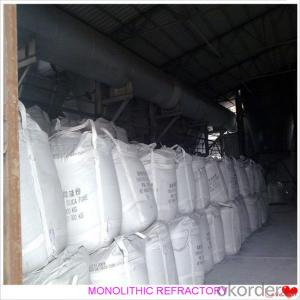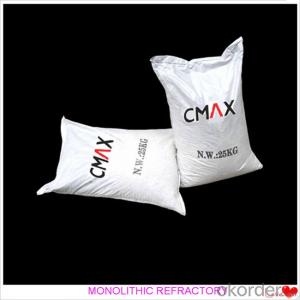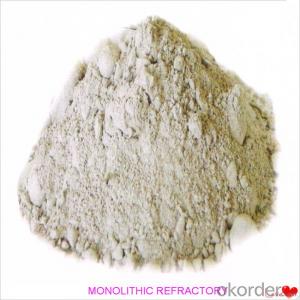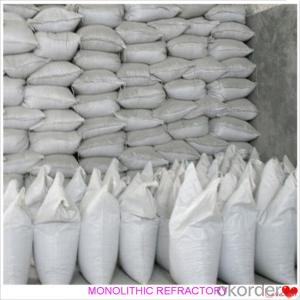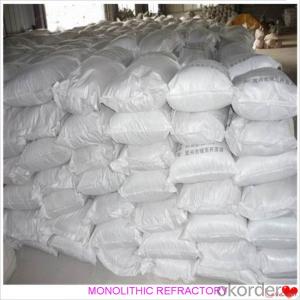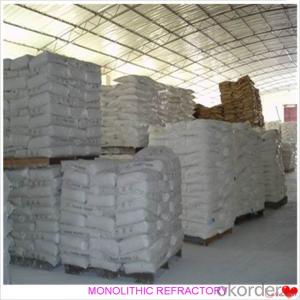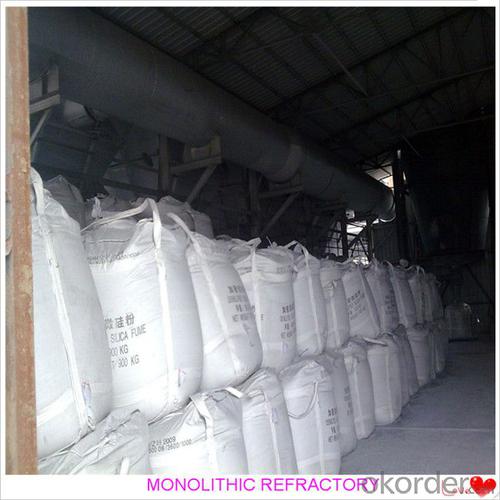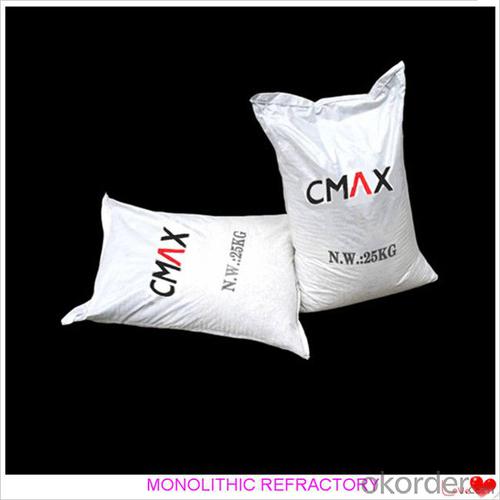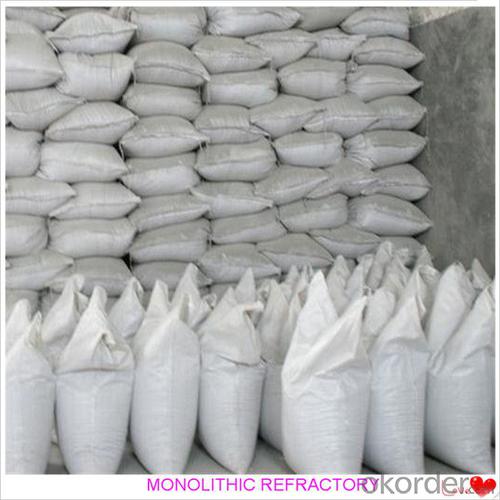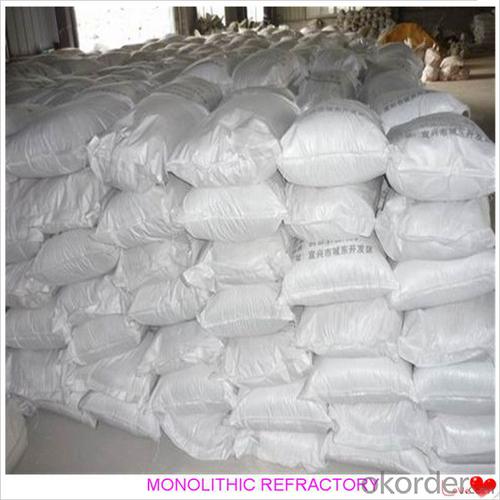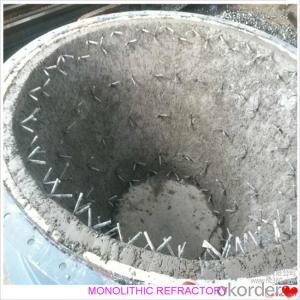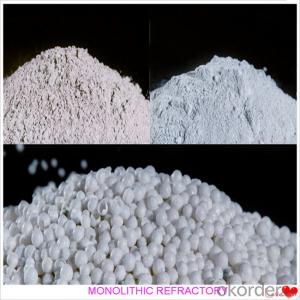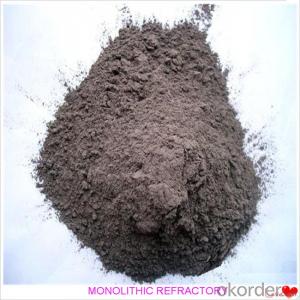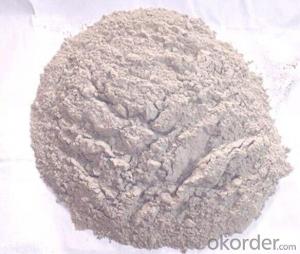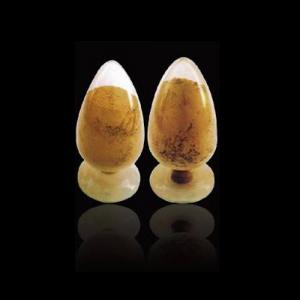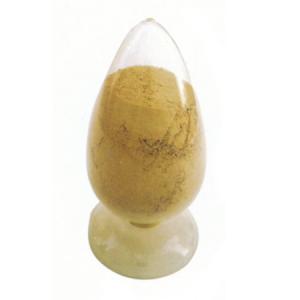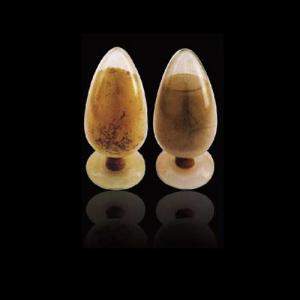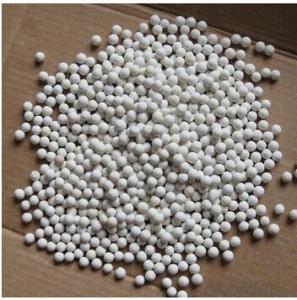Monolithic Refractories for Iron and Steel Industry:Low Weight Castable for Fireplace and Industrial Furnace
- Loading Port:
- China main port
- Payment Terms:
- TT OR LC
- Min Order Qty:
- 1000 kg
- Supply Capability:
- 3000000 kg/month
OKorder Service Pledge
OKorder Financial Service
You Might Also Like
Low Weight Castable For Fireplace and Industrial Furnace in Iron and Steel
Product Description:
Low weight castable is manufactured according to international standards. The product is famous for its excellent abrasion resistance and low thermal conductivity. Further, these can be provided in different specifications as required by the clients. The Low weight castables are used high purity raw materials and additives as the main material, and made of under superfine powder adding technology.
Product Advantages:
The material has excellent structural stability and air tightness, and has high physical and chemical properties, also has a fine working ability.They should be used with the same material products.
Product Applications:
For feature of Low weight castable, they have excellent abrasion resistance, thermal shock resistance, high-temperature resistance, anti-corrode and have high intensity.
Designed for refractory lining of blast furnace iron and slag runners, skimmers and soon
They can be used in troughs of small and mid size BFs and in all positions of the troughs where fast tapping is required.
Product Specifications:
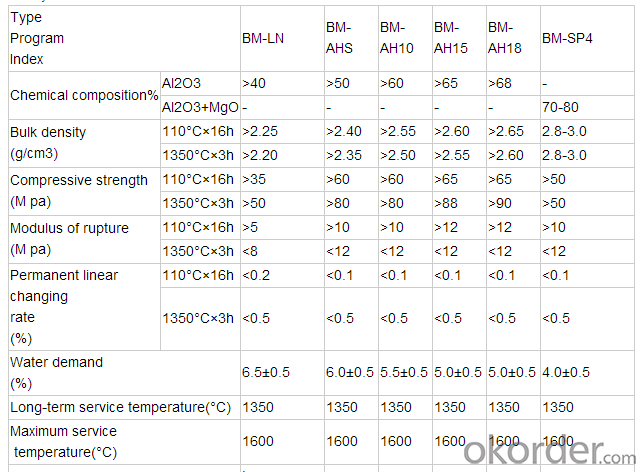
FAQ:
1. How you can control your quality?
For each production processing, we have complete QC system for the chemical composition
and Physical properties. After production, all the goods will be tested, and the quality certificate
will be shipped along with goods.
2. What's your delivery time?
It usually needs about 20days- 45 days after receiving the deposit.
3. Do you provide free samples?
Yes, we can provide a free sample for testing, If we have sample in stock,
The quantity based on the material type, The buyer should bear all the shipping costs.
4. What's your payment terms?
We can accept 30% deposit, 70% balance before shipment for ordrs over $ 2000.
5. Can we visit your Company?
Yes, certainly. You are very welcome to China and we will be honored to have a customer and friend.
Product Picture:
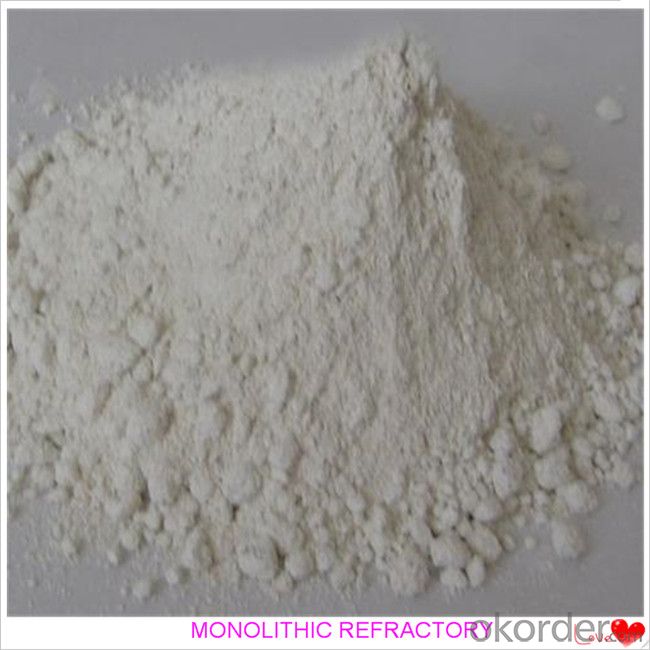
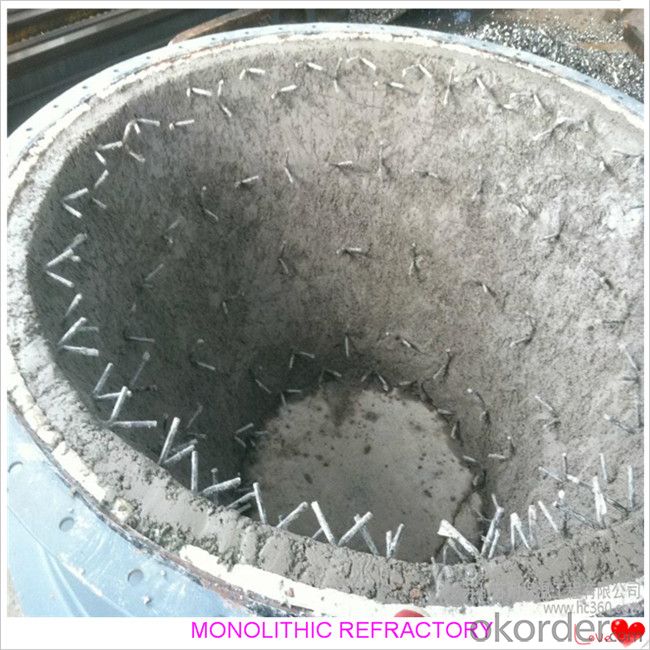
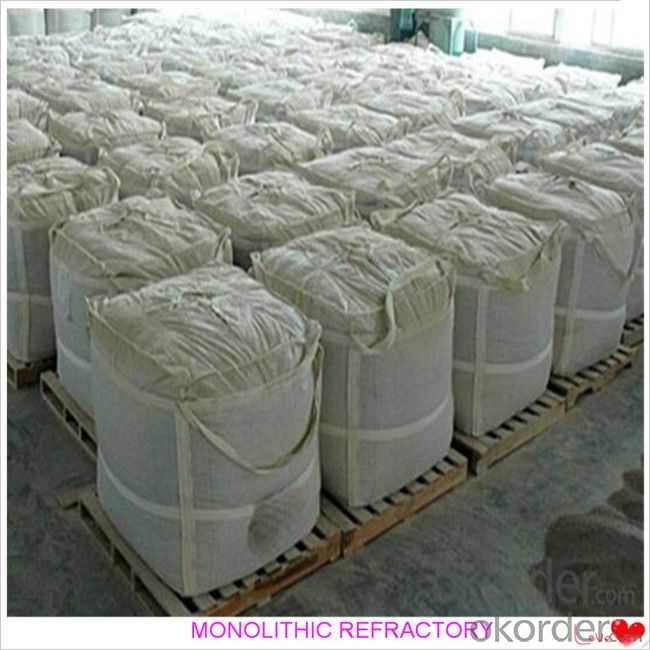
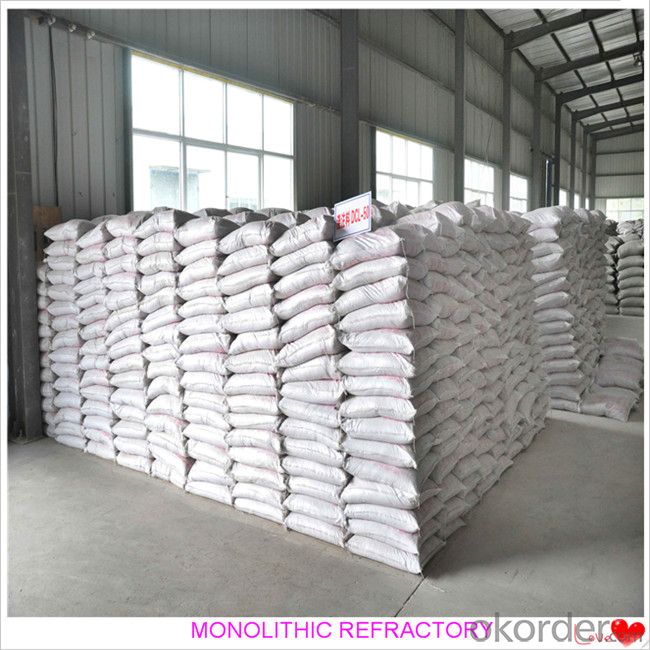
- Q: How are monolithic refractories used in the repair and maintenance of ladles and tundishes?
- Monolithic refractories are used in the repair and maintenance of ladles and tundishes by providing a durable and heat-resistant lining. These refractories can be easily shaped and applied, allowing for quick repairs and preventing heat loss or leakage. They also offer excellent resistance to thermal shocks and chemical corrosion, ensuring a longer lifespan for ladles and tundishes. Monolithic refractories play a crucial role in maintaining the structural integrity and temperature control of these vessels, ultimately improving their overall performance and efficiency.
- Q: How long is the lifespan of monolithic refractories in iron and steel applications?
- Several factors can influence the lifespan of monolithic refractories in iron and steel applications. These factors encompass the type of refractory material utilized, the specific application, the operational conditions, and the implemented maintenance practices. Monolithic refractories employed in iron and steel applications are generally engineered to endure high temperatures, thermal shock, chemical attack, and mechanical stress. When compared to other refractory materials, they are expected to possess a relatively extended lifespan. Under normal operating conditions and with appropriate maintenance, monolithic refractories can typically endure anywhere from several months to several years in iron and steel applications. Nevertheless, it is important to acknowledge that certain areas of the application may be subjected to more severe conditions, necessitating more frequent repairs or replacements. Regular inspections and monitoring of the refractories' condition are vital in order to detect any signs of deterioration or damage. Any necessary repairs or replacements should be promptly executed to prevent further damage and reduce downtime. It is also noteworthy to mention that advancements in refractory technology and materials have resulted in the development of more resilient and durable monolithic refractories. These advancements have extended the lifespan of refractories in iron and steel applications, ultimately enhancing the overall efficiency and productivity of the operations.
- Q: How do monolithic refractories withstand thermal shock and mechanical stress?
- Monolithic refractories are engineered to endure high temperatures and harsh working conditions, making them perfect for applications involving thermal shock and mechanical stress. To begin with, monolithic refractories are designed with a high thermal conductivity, enabling them to rapidly absorb and distribute heat. This characteristic aids in reducing thermal gradients within the material and decreasing the likelihood of thermal shock. When faced with sudden temperature changes, the refractory material expands and contracts uniformly, preventing the formation of cracks and fractures. Additionally, these refractories possess exceptional thermal shock resistance due to their low thermal expansion coefficient. As a result, they are less prone to expanding or contracting when exposed to temperature fluctuations. Consequently, they can endure rapid temperature changes without suffering significant structural damage. Furthermore, monolithic refractories exhibit high mechanical strength, enabling them to withstand various forms of mechanical stress. Their formulation includes carefully selected raw materials and additives that enhance their load-bearing capacity and resistance to mechanical forces. This grants them the ability to bear the weight of surrounding materials and endure any external forces or vibrations present in the application environment. Moreover, monolithic refractories maintain good structural integrity and stability thanks to their dense and compact microstructure. Typically, these materials are created by combining fine powders, binders, and additives, which are mixed and shaped to form a solid and cohesive structure. This structure provides resistance against mechanical stress, preventing the refractories from crumbling or disintegrating under pressure. In conclusion, monolithic refractories withstand thermal shock and mechanical stress due to their high thermal conductivity, low thermal expansion coefficient, strong mechanical strength, and structural integrity. These properties establish them as reliable and durable materials for applications that require resistance to extreme temperatures and challenging operating conditions.
- Q: How do monolithic refractories contribute to the efficiency of iron and steel production?
- Monolithic refractories play a critical role in improving the efficiency of iron and steel production processes. These refractories are renowned for their superior thermal properties, high resistance to mechanical stress, and outstanding resistance to chemical corrosion. One primary manner in which monolithic refractories enhance the efficiency of iron and steel production is by providing effective insulation. By lining furnaces and other high-temperature equipment, monolithic refractories prevent heat loss and ensure consistent maintenance of desired temperatures. This insulation helps reduce energy consumption by minimizing heat wastage, ultimately resulting in cost savings. Moreover, monolithic refractories offer exceptional resistance to thermal shock. In the iron and steel industry, frequent heating and cooling cycles are common, and conventional refractory materials may crack or fail under these conditions. However, monolithic refractories can endure rapid temperature fluctuations without failure, guaranteeing the longevity and reliability of the refractory lining. This resistance to thermal shock reduces downtime for repairs and maintenance, thereby increasing overall production efficiency. Furthermore, monolithic refractories exhibit significant resistance to chemical corrosion. In iron and steel production, various corrosive substances such as molten metal, slag, and gases are present. By utilizing monolithic refractories as lining materials, the underlying structures are protected from chemical attack, preventing erosion and prolonging the equipment's service life. This corrosion resistance reduces the need for frequent repairs or replacements, leading to cost savings and enhanced productivity. Additionally, monolithic refractories offer easy installation and repair. Unlike traditional refractories, which are often constructed brick by brick, monolithic refractories are applied as a single mass. This allows for faster installation and reduces the potential for weak points or joints that may compromise the overall efficiency of the refractory lining. Furthermore, when repairs or maintenance are necessary, monolithic refractories can be easily patched or replaced, minimizing downtime and ensuring seamless operation. To summarize, the use of monolithic refractories in iron and steel production contributes to increased efficiency in multiple ways. Their outstanding thermal insulation properties reduce energy consumption, while their resistance to thermal shock and chemical corrosion ensures reliable and long-lasting refractory linings. Additionally, their easy installation and repair capabilities further enhance productivity. Overall, monolithic refractories are an indispensable component in improving the efficiency and sustainability of iron and steel production processes.
- Q: How do monolithic refractories resist chemical attack from molten metals and slags?
- Monolithic refractories are designed to resist chemical attack from molten metals and slags through a combination of factors. Firstly, monolithic refractories are typically made from high-quality materials that have excellent chemical resistance properties. These materials, such as alumina, magnesia, or silica, have a stable chemical structure that can withstand the corrosive nature of molten metals and slags. Secondly, monolithic refractories are often formulated with additives or binders that enhance their resistance to chemical attack. These additives can improve the refractory's ability to form a protective layer on its surface, which acts as a barrier between the refractory material and the corrosive molten metal or slag. Additionally, monolithic refractories are often designed with a dense microstructure that limits the penetration of molten metals and slags. The dense structure minimizes the pathways through which corrosive agents can reach the refractory material, reducing the risk of chemical attack. Moreover, monolithic refractories can be installed with proper joint design and anchoring systems to prevent the infiltration of corrosive substances. This ensures that the refractory lining remains intact and effectively resists chemical attack. Overall, the combination of high-quality materials, additives, dense microstructure, and proper installation techniques contribute to the ability of monolithic refractories to resist chemical attack from molten metals and slags, thereby extending their lifespan and maintaining the integrity of the refractory lining in high-temperature applications.
- Q: What are the cost implications of using monolithic refractories in the iron and steel industry?
- The cost implications of using monolithic refractories in the iron and steel industry can be both positive and negative. On the positive side, monolithic refractories are often more cost-effective in terms of installation and maintenance compared to traditional brick refractories. They can be easily applied and repaired, reducing downtime and labor costs. Additionally, monolithic refractories have better thermal efficiency, leading to energy savings and lower operating costs. However, there are also potential drawbacks to consider. Monolithic refractories may have a higher initial material cost compared to bricks. They can be more susceptible to chemical attacks and erosion, requiring more frequent replacements. The selection and installation of monolithic refractories also require specialized expertise, which can increase costs if not managed properly. Overall, the cost implications of using monolithic refractories in the iron and steel industry depend on various factors such as the specific application, maintenance practices, and expertise available. Proper evaluation and decision-making are crucial to ensure the best balance between initial investment and long-term cost savings.
- Q: How do monolithic refractories contribute to the reduction of heat loss in ladles and tundishes?
- Monolithic refractories contribute to the reduction of heat loss in ladles and tundishes by providing a continuous and seamless lining that minimizes thermal bridging and heat transfer. Unlike traditional brick refractories, monolithic refractories eliminate joints and gaps, preventing heat from escaping through these openings. Additionally, their high thermal conductivity and insulation properties ensure efficient heat containment within the ladles and tundishes, reducing energy loss and improving overall thermal performance.
- Q: How are monolithic refractories manufactured?
- Monolithic refractories are manufactured by combining various raw materials, such as aggregates, binders, and additives, with water to create a workable mixture. This mixture is then shaped into the desired form, either by casting, gunning, or ramming. Afterwards, the shaped refractory is dried and fired at high temperatures to achieve the desired strength and thermal properties. The manufacturing process of monolithic refractories allows for flexibility in design and installation, making them suitable for a wide range of applications.
- Q: How do monolithic refractories contribute to energy efficiency in iron and steel manufacturing?
- The use of monolithic refractories is crucial for improving energy efficiency in iron and steel manufacturing processes. Made from a single material, typically a combination of high-quality aggregates, binders, and additives, these refractories are easily installed and repaired. One way in which monolithic refractories enhance energy efficiency is by minimizing heat loss. Their excellent insulation properties help maintain high temperatures in the furnace or kiln. This reduces the energy needed to maintain the desired temperature, resulting in lower energy consumption and cost savings. Additionally, monolithic refractories are designed with high thermal conductivity, allowing for efficient heat transfer from hot gases or flames to the iron and steel being processed. This leads to faster heating rates and shorter processing times, resulting in energy savings and increased production capacity. Another advantage of monolithic refractories is their ability to withstand extreme temperatures and harsh conditions. They are resistant to thermal shock, corrosion, and erosion, which extends their lifespan and reduces the need for frequent repairs or replacements. This minimizes downtime, enabling continuous operation and improved energy efficiency. Moreover, monolithic refractories offer design flexibility, allowing for the optimization of furnace and kiln geometries. By customizing the shape and dimensions of the refractory linings, heat distribution can be improved, ensuring more uniform heating and reducing energy wastage. This flexibility also enables the implementation of advanced combustion technologies, further enhancing energy efficiency. In conclusion, monolithic refractories contribute to energy efficiency in iron and steel manufacturing through the reduction of heat loss, enhancement of heat transfer, ability to withstand extreme conditions, optimization of furnace geometries, and facilitation of advanced combustion technologies. By utilizing these refractories, the industry can achieve significant energy savings, cost reductions, and environmental benefits.
- Q: What are the factors affecting the lifespan of monolithic refractories?
- There are several factors that can significantly affect the lifespan of monolithic refractories. 1. Temperature: One of the most critical factors is the operating temperature. Monolithic refractories are designed to withstand high temperatures, but prolonged exposure to extreme temperatures can cause thermal shock and lead to premature failure. 2. Thermal cycling: Frequent temperature fluctuations, known as thermal cycling, can also shorten the lifespan of monolithic refractories. The expansion and contraction of the refractory material can create stress, resulting in cracking and degradation over time. 3. Chemical environment: The chemical environment in which the monolithic refractories are used plays a crucial role in their lifespan. Exposure to corrosive gases, acids, alkalis, or molten metals can cause chemical reactions that degrade the refractory material. 4. Mechanical stress: Mechanical stress, such as abrasion, impact, and vibration, can weaken monolithic refractories and shorten their lifespan. This is especially relevant in industries with high mechanical activity, such as steelmaking or cement production. 5. Installation and maintenance: Proper installation and regular maintenance are essential for maximizing the lifespan of monolithic refractories. Poor installation techniques or neglecting maintenance can result in weak joints, inadequate anchoring, or the growth of cracks, leading to premature failure. 6. Quality of refractory material: The quality and composition of the monolithic refractory material can significantly impact its lifespan. Higher-quality materials with better resistance to temperature, chemical attacks, and mechanical stress tend to have longer lifespans. 7. Design and engineering: The design of the refractory lining and its engineering considerations, such as thickness, shape, and reinforcement, also influence the lifespan of monolithic refractories. Proper design can distribute stress more evenly, reduce thermal gradients, and improve overall performance and durability. 8. Operating conditions: The way monolithic refractories are operated and handled can affect their lifespan. Factors such as rapid temperature changes, improper cooling or heating procedures, or excessive thermal cycling can all contribute to premature failure. In summary, the lifespan of monolithic refractories is influenced by various factors, including temperature, thermal cycling, chemical environment, mechanical stress, installation and maintenance practices, quality of refractory material, design and engineering considerations, and operating conditions. Proper consideration and management of these factors are essential for maximizing the lifespan of monolithic refractories.
Send your message to us
Monolithic Refractories for Iron and Steel Industry:Low Weight Castable for Fireplace and Industrial Furnace
- Loading Port:
- China main port
- Payment Terms:
- TT OR LC
- Min Order Qty:
- 1000 kg
- Supply Capability:
- 3000000 kg/month
OKorder Service Pledge
OKorder Financial Service
Similar products
Hot products
Hot Searches
Related keywords
